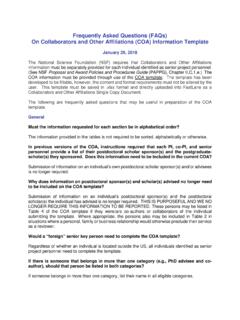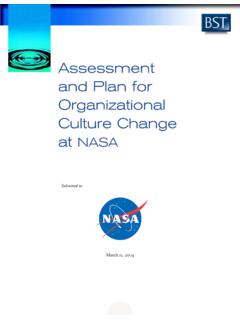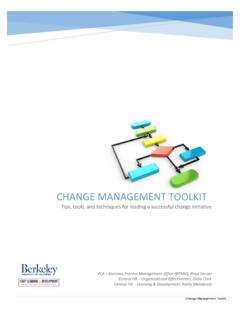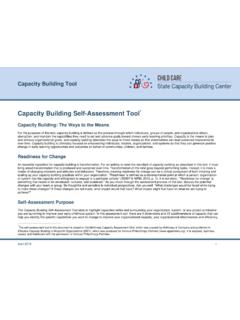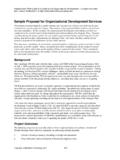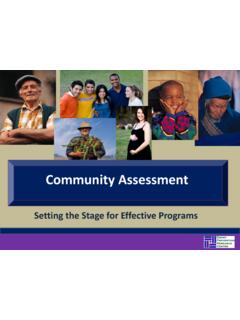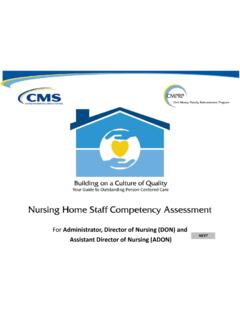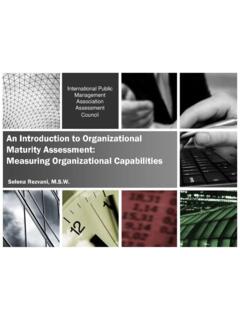Transcription of Increasing gender diversity, equity, and inclusion in the ...
1 ADVANCEORGANIZATIONAL change FOR gender EQUITY IN STEM ACADEMIC PROFESSIONSI ncreasing gender diversity, equity, and inclusion in the science, technology, engineering, & mathematics (STEM) academic professions by promoting evidence-based, systemic changes in universities and DISCOVERIES BEGINDIRECTORATE FOR EDUCATION & HUMAN RESOURCESEHRDVANCE027132N0. OF GRANTS20 YEARS OFNSFADVANCEIn 20 years, the NSF ADVANCE grant program has supported 217 different institutions of higher education in 48 states, the District of Columbia, and Puerto Rico. These represent a total NSF investment of over $ ADVANCEFUNDING TRANSFORMATION (IT) Supports development of innovative organizational change strategies to enhance gender equity in STEM academics in non-profit institutions of higher education (IHEs).
2 Projects must be innovative in terms of developing new systemic change strategies and/or addressing new gender equity issues, as well as include original research of systemic equity issues in STEM academics. All non-profit institutions of higher education that have not had a previous ADVANCE IT award are eligible to the adaptation and implementation of successful strategies to address systemic gender equity issues for STEM faculty within one non-profit IHE or by a non-profit, non-academic organization to enhance equity nationally or regionally within one or more STEM disciplines. These awards may be made to a single non-profit IHE that has not had an ADVANCE IT award or to an eligible non-profit, non-academic institutional self-assessment to identify STEM faculty inequities and pilot equity strategies to inform the development of a five-year STEM faculty equity strategic plan.
3 Non-profit IHEs that are not, and have not been, the lead on any previous type of ADVANCE award, are projects involving two or more non-profit IHEs and/or non-profit, non-academic organizations to undertake systemic change projects that have national or regional reach. Projects can focus on one or multiple STEM disciplines and define and propose significant number of women obtaining STEM doctorate degrees has increased steadily in recent decades. However, women, especially women of color, continue to be underrepresented in STEM academic positions, especially at senior ranks and in leadership positions. Research* indicates that the marginal participation and advancement of women in STEM is often a function of external systemic factors unrelated to their ability, interest, and technical skills, such as: Implicit and explicit bias Differential service and teaching workload and less recognition and value of this work by organizations Underrepresentation of women, especially women of color, in academic leadership and decision-making positions Differential effects of work and family demands Culture and climate of academic departments and STEM organizations*For overviews of the related research see Abigail J.
4 Stewart and Virginia Valian, An Inclusive Academy: Achieving Diversity and Excellence. MIT Press, 2018 and Sandra Laursen and Ann E. Austin, Building gender Equity in the Academy: Institutional Strategies for change , Johns Hopkins Press, PROGRAM GOALSThe long-term goal of the National Science Foundation s ADVANCE program is to address the systemic factors that result in gender inequity for STEM faculty by supporting grant projects to make systemic and cultural changes to IHEs and within STEM disciplines. The program goals and the types of grants supported by ADVANCE have changed over time in accordance with lessons learned from the work of ADVANCE grantees. After 20 years of funding the development and testing of systemic change strategies to build equity for STEM faculty; the ADVANCE program has increased emphasis on scale-up and incorporating an intersectional lens into the systemic change and gender equity work supported by the program.
5 The 2021 program goals are: To broaden the implementation of evidence-based, systemic change strategies that promote equity for STEM faculty in academic workplaces and the academic profession. To promote the involvement of all genders in the design of systemic change strategies that use intersectional approaches in recognition that gender , race, and ethnicity do not exist in isolation from each other and from other categories of social identity. To contribute to the research knowledge base on gender equity and the intersection of gender and other social identities in STEM academic NSF ADVANCE program recognizes that equity barriers are not identical for all STEM faculty, therefore, the program seeks to promote systemic change that considers the intersection of gender and other social identities, especially the intersection of race and ethnicity and gender .
6 Intersectionality was first framed in terms of employment discrimination by Kimberle Crenshaw in 1991, and further developed by many scholars.* Intersectionality recognizes that social identities do not exist in isolation from each other and may be more or less salient in any given context and interaction with STEM colleagues, faculty, and students. NSF ADVANCE has required that an intersectional lens be included in the systemic change and gender equity work supported by the program since 2016.*RESOURCES ON INTERSECTIONALITYC renshaw, K. (1991) Mapping the Margins: Intersectionality, Identity Politics, and Violence against Women of Color. Stanford Law Review. 43 (6): 1241-1299 Collins, Patricia H.
7 , Bilge, Sirma. (2016) Intersectionality. Cambridge, UK: Polity , N. M., & Hyde, J. S. (2016a). Intersectionality in Quantitative Psychological Research: I. Theoretical and Epistemological Issues. Psychology of Women Quarterly, 40(2), , N. M., & Hyde, J. S. (2016b). Intersectionality in Quantitative Psychological Research: II. Methods and Techniques. Psychology of Women Quarterly, 40(3), MEETINGCOMMITTEECONFERENCELECTURECLASSRO OMLABORATORY7 INTERSECTING SOCIAL IDENTITIESL anguageGenderAgeDisabilityNationalityLGB TQRaceEthnicityEducationClassDiagram depicting some of the different social identities that may intersect with each other and that may impact an individual s treatment and experience in different social contexts (examples from a STEM academic career are shown in the turquoise hexagon).
8 An individual may be anywhere on the spectrum of the spokes and will have differential advantages and privileges as a diagram is adapted from Metcalf, H., Williams, R., and Russell, A. (2018), Intersectionality: A critical framework for STEM equity. Retrieved from DEVELOPEDBYADVANCE AWARDEESENHANCE INSTITUTIONAL STRUCTURESW ritten and unwritten policies, procedures, and practices can unintentionally create inequities. ADVANCE institutions have benefited from: Reviewing, revising, and Increasing the transparency and consistent implementation of recruitment, hiring, promotion, and tenure policies as well as processes for reporting harassment. Collecting faculty data and workplace climate data; reporting this data, disaggregated by relevant demographics (at least gender and race and ethnicity but other information may be relevant such as tenure track status and rank) and expecting and rewarding the use of the data in decision-making and planning.
9 Modifying existing, or creating new, administrative leadership positions to incorporate responsibilities for implementing practices for achieving and sustaining faculty diversity, equity, and inclusion and to monitor and evaluate these practices to make changes as SUPPORTSTEM faculty job satisfaction which is highly influenced by work-life balance and can impact recruitment, retention, and promotion, especially of diverse faculty. ADVANCE institutions have benefited from: Using data from faculty climate surveys and focus groups to identify the work-life issues impacting faculty, especially diverse STEM faculty and then using this data to address the concerns of faculty.
10 Developing and implementing flexible career policies that address life transitions, dual-career hiring policies tailored to the institution and region, career support programs to mitigate work-life issues for faculty such as isolation and solo status, and other needs identified by faculty. Creating structures to train administrators and faculty on these policies and work-life programs and to ensure that there are no negative impacts on career progress or success for those participating in work-life CAREER SUPPORTC areer support programs are important for recruitment, retention, and promotion of all faculty, particularly diverse faculty. ADVANCE institutions have benefited from: Establishing formal faculty mentoring structures and providing recognition for the time and effort of the faculty mentors.


